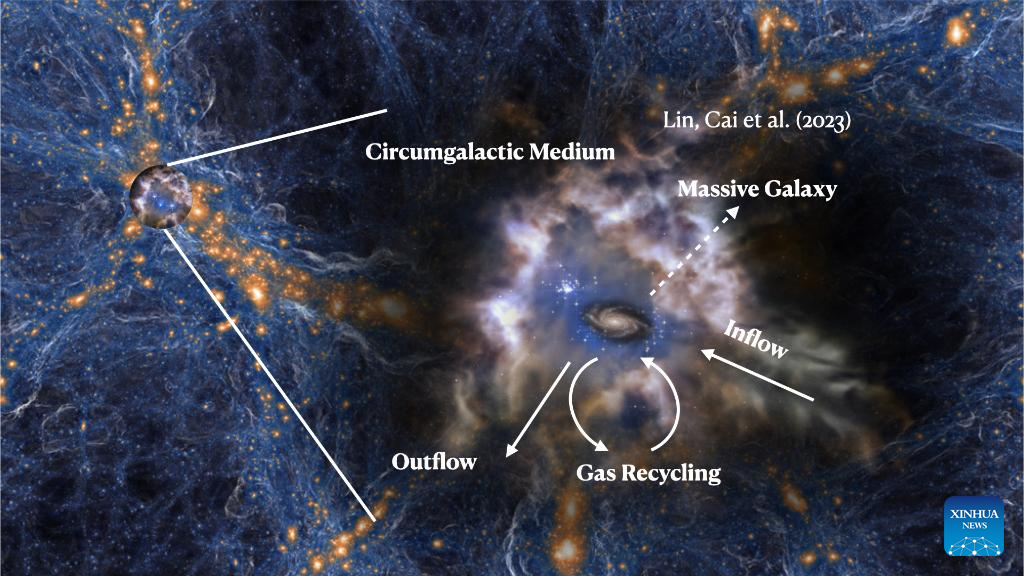
This diagram provided by Tsinghua University shows the process of gas recycling, which has been proved to be the key factor in the formation of massive galaxies in the early universe. (Tsinghua University/Handout via Xinhua)
BEIJING, May 6 (Xinhua) -- An international team of scientists has proved that gas recycling is the key factor in the formation of massive galaxies in the early universe and this discovery came after they observed a nebula located 11 billion light-years away.
After years of study, the team has detected the detailed process of circumgalactic gas entering this massive galaxy group and has captured a three-dimensional view of its gas recycling, Tsinghua University told a press conference on Friday.
According to the university, previous studies had not fully understood the process of how gas flows into galaxies and how this flowing gas drives star formation.
Therefore, the team of astronomers from Tsinghua University and their counterparts from home and abroad used the 10-meter Keck II telescope and targeted a massive nebula, referred to as MAMMOTH-1, at an epoch corresponding to 11 billion years ago, to obtain the first glimpse of how such galaxies accrete their gas.
They successfully detected line emission in hydrogen, helium and carbon extending for 300,000 light years around this galaxy, said the research article published in the journal Science on Friday.
In further analysis, they found the galaxy is surrounded by gas rich in heavy elements, which was ejected from the center of the galaxy. The cooled gas then flows back into the galaxy under its own gravity and the interactions with nearby satellite galaxies, said Cai Zheng from Tsinghua University.
"Our observations give a first hint that the recycled inflows of gas might be a ubiquitous supply mechanism for the formation of stars and massive galaxies in the early universe," added Cai, who is also the corresponding author of the paper. ■



